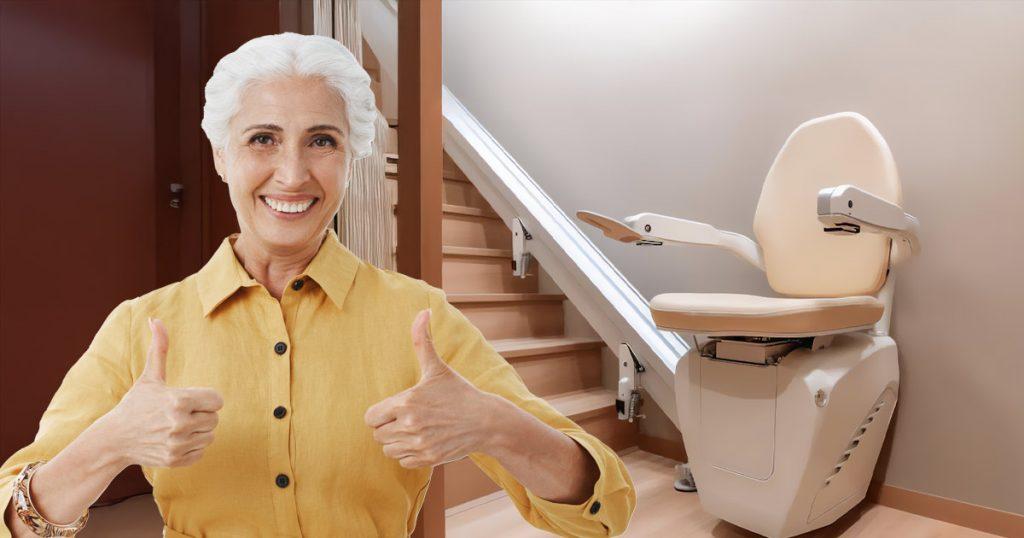For many seniors and individuals with mobility challenges, stair lifts provide vital access to different levels of their homes. But one key question often comes up when considering stair lift installation: does insurance cover stair lifts? While stair lifts make a significant difference in maintaining independence and safety, the answer isn’t always straightforward. Coverage varies widely, so understanding the specifics of insurance policies and alternative funding options is essential.
Does Insurance Cover Stair Lifts?
Insurance coverage for stair lifts depends on the specific policy and provider. Generally, Medicare doesn’t cover stair lifts as they’re considered “home modifications” rather than “medically necessary equipment.” While Medicare Parts A and B don’t usually cover the cost, Medicare Advantage Plans or Medicaid may offer limited options under certain conditions.
Some private insurance plans provide partial coverage or reimbursement for stair lifts if specific criteria are met, such as a doctor’s recommendation or proof that the lift is critical for health and safety. Checking with your insurance provider can clarify your eligibility and any possible costs that could be offset.
Importance of Understanding the HCPCS Codes
When it comes to insurance and stair lifts, understanding the Healthcare Common Procedure Coding System (HCPCS) is essential. HCPCS codes are standardized codes used to classify medical equipment and services, and they play a significant role in determining insurance coverage eligibility.
Familiarity with these codes can help policyholders communicate effectively with their insurers, especially when seeking reimbursement for durable medical equipment (DME) like stair lifts. Knowing which codes apply to stair lifts can help streamline the process and improve the likelihood of coverage or partial reimbursement.
What Are These Codes?
The HCPCS codes that pertain to stair lifts help insurers categorize and identify types of medical equipment. While they don’t guarantee coverage, being aware of these specific codes may assist you in discussing your options with your provider. Here are some codes relevant to stair lifts:
HCPCS – E0625, E0630, E0635, E0636, E0637, E0638, E0639, E0640
The HCPCS codes, as defined by CMS, refer to “patient lifts,” commonly known as Hoyer lifts. These devices are specifically designed to help individuals transfer safely from a wheelchair or bed to a chair, bath, restroom, or to assist in standing from a seated position using a sit-to-stand lift. It’s important to note that stair lifts are not included under these HCPCS codes and, therefore, are typically not covered by insurance policies that rely on this classification.
HCPCS – E0627, E0628, E0629
The Centers for Medicare & Medicaid Services (CMS) defines these HCPCS codes as applying to “seat lift mechanisms.” Unlike stair lifts, seat lifts—often called lift chairs or power lift recliners—are designed to help users stand up from a seated position by raising the recliner off the floor. These devices are typically recliners with a powered lifting function, but they do not provide mobility on stairs. Therefore, stair lifts are not covered under these specific HCPCS codes.
Find Your Insurance Provider
Since stair lift coverage varies by provider, exploring how each company approaches these devices is helpful. Here’s a look at some major providers and what you might expect regarding stair lift support.
Aetna
Aetna does not cover stair lifts under any of its plans. According to their policy, stair lifts, platform lifts, elevators, and similar devices are considered “home modifications” rather than essential medical equipment. As such, they are excluded from coverage, even with a medical recommendation.
United Healthcare
United Healthcare does not include stair lifts in its coverage. Their policy specifically excludes stair lifts and stair glides, listing them under services not eligible for reimbursement. This applies across both traditional and Medicare Advantage plans.
AARP
AARP’s policy, in alignment with Medicare, does not cover stair lifts, as they are categorized as “items of convenience” rather than medically necessary equipment. Although some Medicare Advantage plans through AARP offer benefits for essential home mobility devices, stair lifts are excluded.
Blue Cross Blue Shield
Blue Cross Blue Shield does not cover stair lifts, stating that devices such as chair lifts or stairway elevators are not considered part of their covered benefits. While Medicare Advantage plans may offer additional benefits in some cases, stair lifts are typically classified as home modifications rather than essential medical devices.
Cigna
Cigna’s policy also excludes stair lifts, categorizing them as non-medical or self-help devices. As a result, they fall outside the scope of covered benefits, even if prescribed by a healthcare provider. This restriction aligns with their general policy on items deemed non-essential for medical purposes.
Humana
While Humana’s policies do not clearly specify coverage for stair lifts, it is highly unlikely that they are included in standard plans. For further clarity, contacting Humana with the relevant HCPCS codes for stair lifts may help determine if any specific plan offers partial reimbursement.
Other Alternatives Besides Your Insurance Provider
If insurance coverage is limited or unavailable, several alternative funding sources may help cover stair lift costs. For example, the U.S. Department of Veterans Affairs (VA) often assists veterans with the cost of home modifications, including stair lifts. Additionally, Medicaid waiver programs in some states provide financial aid for in-home modifications based on medical necessity and financial eligibility.
Nonprofit organizations focused on accessibility and eldercare may also offer grants or low-interest loans. Exploring these options may alleviate the financial burden if insurance falls short of covering the costs.
Simplifying Insurance Options for Stair Lifts
Understanding how stair lifts fit within insurance coverage is essential for anyone considering this valuable home mobility option. While standard insurance plans often don’t fully cover stair lifts, Medicare Advantage plans, long-term care insurance, and Medicaid waivers can provide alternative paths to financial assistance.
Exploring other resources like veteran programs or state grants for accessibility improvements can make a difference. For seniors and individuals with mobility challenges, securing a stair lift means a greater level of independence and safety, making it well worth investigating every funding opportunity available.
